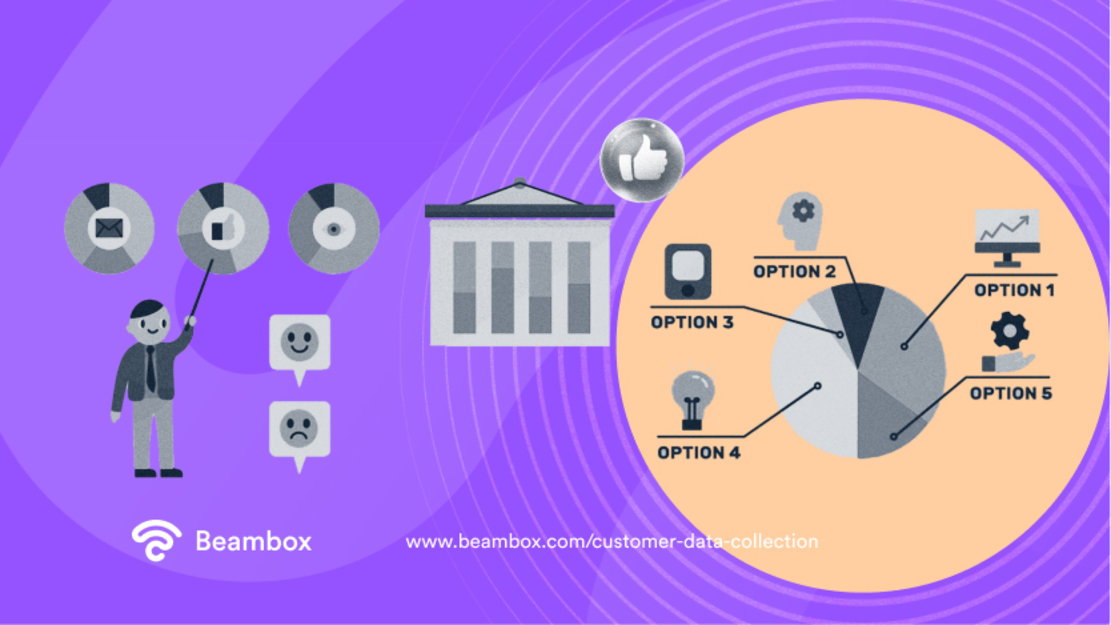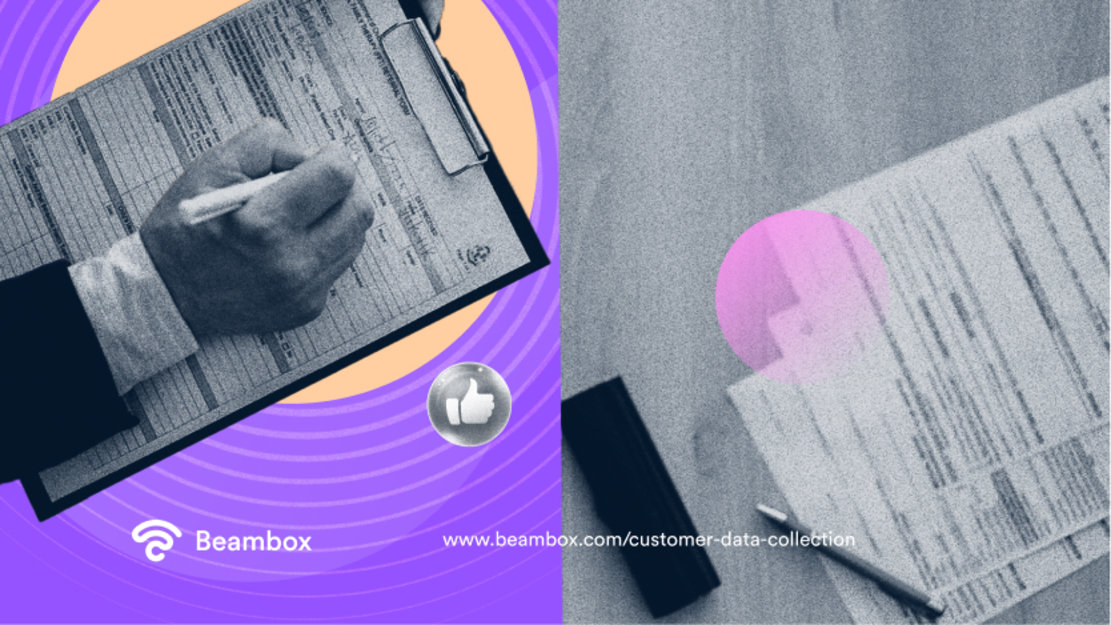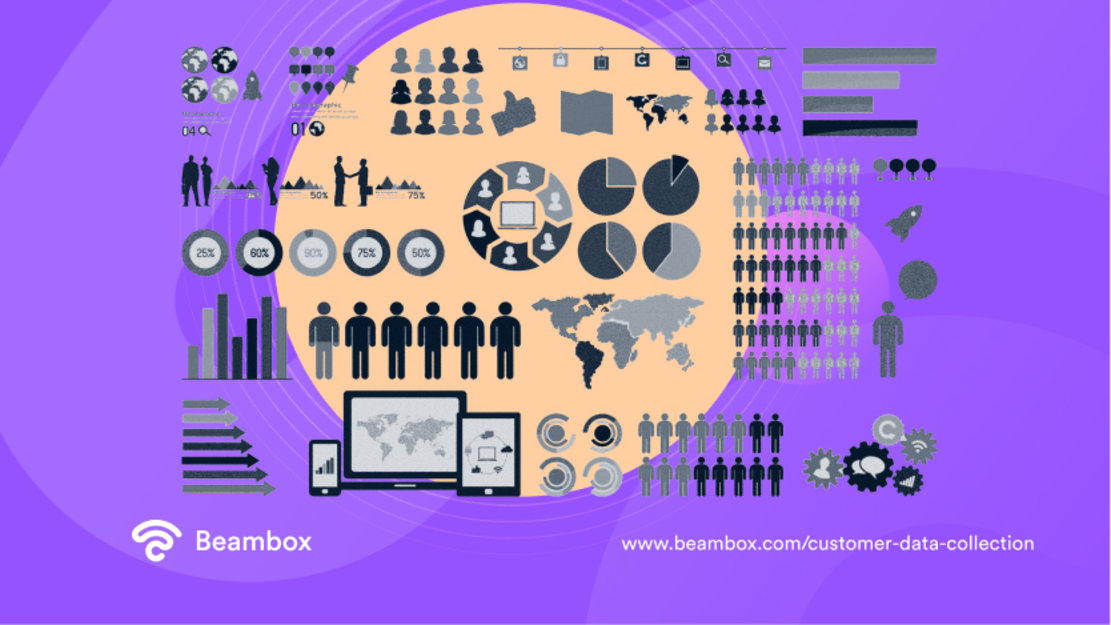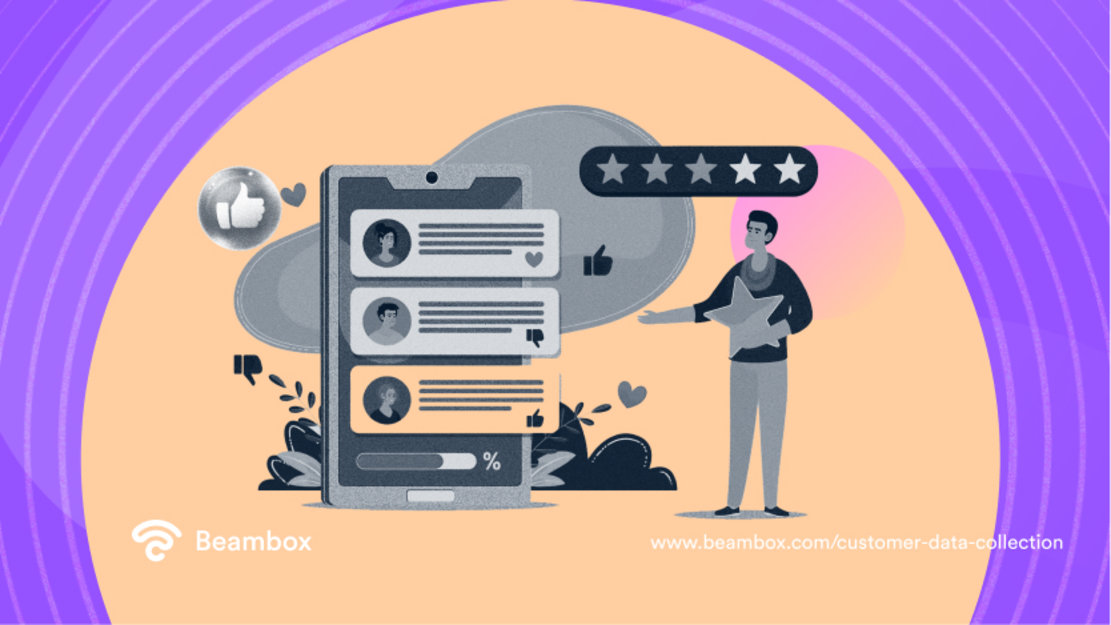Customer Data Collection: Strategies for Small Businesses

Customers expect businesses to understand their needs and preferences in today’s digital age. As a small business owner, one of the best ways to meet these expectations is through customer data collection. However, collecting customer data is intimidating, especially for small businesses with limited resources.
This article will discuss effective strategies that small businesses can use to get started with customer data collection. By implementing these strategies, you can gain valuable insights into customer behavior and preferences to improve customer experience and increase customer satisfaction.
So, whether you’re a small business owner looking to improve your marketing strategies or just starting, keep reading to learn how to get started with data collection!
What Is Customer Data Collection?
Customer data collection involves gathering information about your customers, including their demographic data and behavior patterns.
You can collect this information through various methods, such as surveys, feedback forms, and website analytics. Customer data collection aims to gain insights into your customer’s needs, which you can use to improve your marketing strategies and results.
For example, let’s say that you own a small business that sells and repairs intelligent devices. By collecting customer data, you can understand your customer’s expectations and needs to create the perfect offer. Furthermore, you can use this information to improve your business processes and the customer experience.
Data collection is essential for small businesses looking to stay competitive in today’s market.
Benefits of Collecting Customer Data

This section will explore the five top benefits of collecting customer data and why small businesses must implement such a strategy today.
-
Improved customer experience: Small businesses can develop personalized customer experiences by collecting customer data. This, in turn, can lead to higher customer satisfaction and loyalty.
-
Enhanced product development: Collecting customer data helps businesses understand customer needs and preferences. This allows them to develop better products that cater to their target audience.
-
Improved marketing ROI: Through collecting customer data, businesses can optimize their marketing strategies and investments- This will lead to a better ROI and more revenues.
-
Better customer segmentation: Businesses can create better marketing campaigns thanks to customer data collection. Furthermore, segmenting your audience can improve the effectiveness of any initiative.
-
Reduced marketing costs: Collecting customer data can help businesses optimize their marketing investments by targeting customers with the right message. It will also lower the cost of acquiring new customers.
As you can see, collecting customer data is essential for any small business that wants to succeed. Let’s now explore what data you need to collect and the best methods for doing it.
What Data To Collect From Customers

You may wonder what data to collect from customers. The answer will depend on your business, industry, and goals.
For example, if you own a restaurant, you can collect data such as customer contact information, dietary preferences, and past orders. This data can help you personalize the customer experience and offer relevant discounts and promotions.
Likewise, if you own a small business that provides services, you can collect data such as customer preferences, areas of expertise, and feedback. This data can help you understand what services customers are interested in and how you can improve customer experience.
Collecting customer data lets, you gain valuable insights into your customers’ wants, needs, and preferences. This data can create targeted marketing campaigns, optimize customer experience, and increase customer loyalty.
Let’s look at the types of data you can collect to improve your business results.
Types of Customer Data Collection
Data is the backbone of modern business. In today’s busy world, small businesses must keep pace with the changing customer preferences, behavior, and needs. However, making effective business decisions can be challenging without the right data. This is where customer data collection comes into play.
Data collection allows you to gain valuable customer insights and make profitable decisions. But what types of customer data can you collect?
You have many alternatives for data collection; however, remember to collect data that can support your business decisions.
Let’s explore the four main types of customer data collection that small businesses can leverage to understand their audience.
Demographic Customer Data Collection

Demographic customer data collection involves collecting information about the demographic characteristics of your customers, such as age, gender, location, and income level. You can collect this data through surveys, feedback forms, website analytics, social WiFi hotspots, and social media.
Demographic customer data can segment your customers into different categories based on their demographic characteristics. This will allow you to understand the needs of each customer segment and tailor your marketing strategies accordingly.
For example, suppose you own a small business that sells organic skin care products. In that case, you can collect customer demographic data to determine the most effective marketing messages.
Behavioral Customer Data Collection
Behavioral customer data collection involves collecting data on your customers’ behavior patterns. This data can include information about the products that customers purchase, the time they spend browsing your website, and the frequency of their visits.
Behavioral segmentation allows you to gain insight into how customers interact with your products and services and make informed decisions about marketing your products and services.
For example, if you own an online fashion store, you can use behavioral data to determine which products customers like the most and which products you should focus on marketing.
Psychographic Customer Data Collection

Psychographic data collection focuses on collecting data that reveals customers’ attitudes, values, and lifestyles. We can also collect this data type through surveys, feedback forms, and industry reports.
Psychographic marketing research can take more effort due to the nature of the data. However, this type of customer data collection is priceless when understanding your customer more effectively.
For example, if you own a boutique clothing store, you can use psychographic data to understand what type of clothing draws your customers. This data can help you tailor the perfect guerrilla marketing initiative to stand out and get the attention of your ideal customers.
Transactional Customer Data Collection
Transactional customer data collection focuses on collecting data about customers’ previous transactions. This data can include information about the products that customers purchase, how much they spend, their payment method, and the frequency of their purchases.
Transactional customer data collection is valuable because it lets you understand your customer’s buying habits and patterns. You can use this information to create targeted marketing campaigns and optimize the customer experience.
For example, if you own a restaurant, you can use transactional data to learn which products customers buy the most. With this understanding, you can create special offers and loyalty programs.
How To Collect Customer Data?

With so much valuable customer data, it is normal to wonder how to collect customer data. Luckily, there are various tools and methods. It is also likely that you are already collecting data, but you are not analyzing them. For example, if you use customer relationship management (CRM) software, you already have a few insights into your customer behavior.
Along with collecting data, it is vital to transform them into reports and insights. Data visualization tools can help you with this. However, you might need IT skills to learn how to use them.
Let’s look at the best methods and systems for customer data collection.
4 Customer Data Collection Methods

This section explores the best customer data collection methods. Some of them are free but will require time and energy. Otherwise, you can automate your data collection with specific software. Which method works best for your business will depend on your attitude, resources, and skillset.
However, remember that data are useful as long as they serve you. Therefore, set up data collection wisely. Let’s look at some of the most effective customer data collection methods.
Method #1: Customer Data Collection With Surveys
Surveys are an excellent tool for customer data collection. They allow you to gather customer feedback and gain insights into their wants, needs, and preferences.
When creating a survey, craft questions that apply to your business and customer base; ensure your survey is concise and easy to understand for customer data collection. This will encourage customers to respond and provide helpful customer data.
For example, if you own a business specializing in skin care products, you can create a customer feedback form with questions about customers’ skin care needs and preferences. You can then use this data to create more effective product offerings and marketing messages.
Method #2: Customer Data Collection With Website Analytics
Web analytics is another excellent method for customer data collection. This data can include insights into the customer journey, the number of visitors to your website, and each customer’s behavior.
With web analytics, you can track where customers are coming from, which pages they visit, and how long they spend on each page. This data will help you understand the customer journey and make informed decisions about your website design and marketing strategies.
Method #3: Customer Data Collection With WiFi Marketing Software
WiFi marketing software is a powerful tool for customer data collection. It allows you to track customers’ demographics and behavior when they are in your store. Social WiFi hotspots can help you collect data such as email addresses, phone numbers, and other customer information.
Moreover, you can understand their online behavior to understand what type of customers attend your business.
Method #4: Customer Data Collection With Social Media
Social media networks offer you tools to analyze your audience and understand what your followers like and dislike. They also help you to segment your audience to increase the return from the advertising.
However, another smart way to use social media to gather data and insights is by listening to ongoing conversations. This is an excellent way of customer data collection because it allows you to create offer and ride trends that others in your industry are overlooking.
By monitoring conversations and trends on social media, you can gain insights into customer interests and pain points.
Best Practices for Customer Data Collection
Remember that customer data collection sometimes involves customers’ privacy, so adhering to data protection regulations is essential. Here are some best practices to keep in mind when collecting customer data:
- Use encrypted software to protect customer data
- Only collect information that is necessary and relevant to your business
- Get customer consent before collecting data
- Create clear and comprehensive guest WiFi conditions
- Regularly update your privacy policies as regulations change
- Be transparent about how you use customer data
- Store customer data securely and safely
By following these best practices, you will ensure that you get your customer data the right way and use it ethically and responsibly.
In conclusion, data collection can help your business grow. However, you must do it with intentional criteria and the right tools. Otherwise, you might end up collecting useless data or being unable to use them.
If you are looking for an affordable and effective WiFi marketing solution? Have a look at Beambox.
Beambox is a WiFi marketing suite that allows you to gather relevant customer data and automate marketing campaigns. With Beambox, you will have insights and reports into your customer behavior that you can use to create the perfect messaging for your products.
Moreover, you can use Beambox to grow your social media pages and ratings on local review sites.
Beambox WiFi marketing solution does not require any additional hardware. Furthermore, you can try it for free for thirty days. Does it sound interesting? Start your trial now!
Get Started With Free WiFi Marketing
Beambox helps businesses like yours grow with data capture, marketing automation and reputation management.
Sign up for 30 days free


